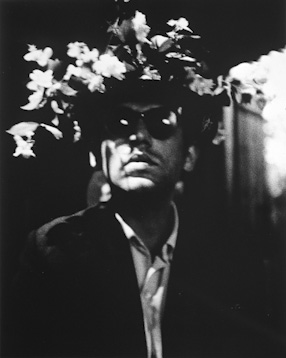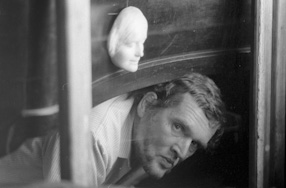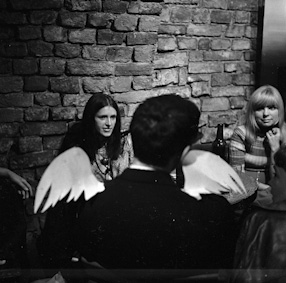Krzysztof Niemczyk
Krzysztof Niemczyk came from Cracow and was a writer, a painter and a performer famous for his uncommon behavior. He often appeared on the streets of Cracow and in other public places wearing a costume and make-up, and with his actions ridiculing widely accepted rules. He became famous thanks to the publication of his novel The Courtesan and the Chicks, or a Crooked Mirror of Passionate Action, or A Study of Chaos (Polish edition, 2007).
Tadeusz Kantor and the artistic avant-garde for a short period of time accepted Niemczyk as their own. He befriended Anka Ptaszkowska and visited Foksal Gallery in Warsaw. He played a crucial role in the event entitled We are not asleep that was organized by Mieczysław Dymny, Stanisław Szczepański, Tomasz Wawak (with the help of the critics from Foksal Gallery - Anka Ptaszkowska and Wiesław Borowski) during the 4th Symposium and Exhibition Złote Grono in 1969 in Zielona Góra. Niemczyk proved to be the most creative one when harassing dignitaries. When in 1970 the critics from Foksal Gallery created “New Rules of the Foksal Gallery,” which called for a transformation of the gallery into an institution that would inform about artistic events happening outside of the gallery, Niemczyk was the first one to adopt these ideas. In the restaurant of Grand Hotel in Warsaw he organized an event Kelnerze, ty nam dzisiaj dasz napiwek.
Since he didn’t have anything to lose, Niemczyk wasn't afraid of scandal and went much further than other artists. He was familiar with police interrogations, lived in poverty and didn't really consider his own actions as art. However, his presence was seen as a threat to the institution; especially so after 1968 when the authorities used administrative means to restrict liberty. His closeness to galleries like Krzysztofory and Foksal became, at least in the eyes of some of their members, inconvenient and brought to light differences in attitudes which were one of the reasons behind the departure of some of Foksal Gallery’s founders.
On numerous occasions Niemczyk posed for Kossakowski’s portraits, which included Parisian hallways chambres de bonne (maids' rooms at the top floors of Parisian townhouses, the cheapest type of accommodation available to those who found themselves penniless in the wealthy city).




